The Beauty and Transience of Nature
Botanical artworks by Sharon Field and Halina Steele
Description | The Story | About the Artists
Visitor Centre Gallery
26 August – 2 October 2011
An exhibition of botanical artworks by Sharon Field and Halina Steele demonstrating the inordinate beauty in all aspects of the life of a plant.
The Beauty and Transience of Nature includes fine paintings of a variety of Australian plants which can be found in the Australian National Botanical Gardens, as well as non-Australian plants. All are beautiful. All are here briefly. All demonstrate nature in her full glory.
In the Gallery with the Artist
Artist Sharon Field will demonstrate her work and the discuss the time and skill involved in producing her artwork in The Beauty and Transience of Nature
In the Visitor Centre Gallery | Each Sunday throughout September | 10.00 am - 2.00 pm
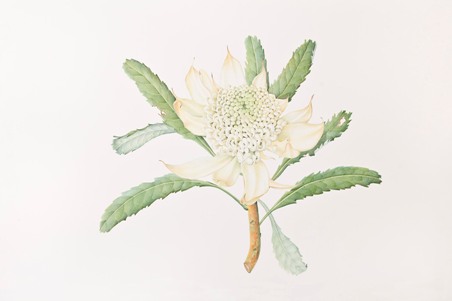
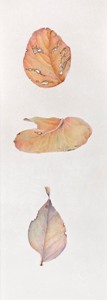
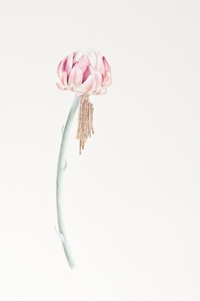
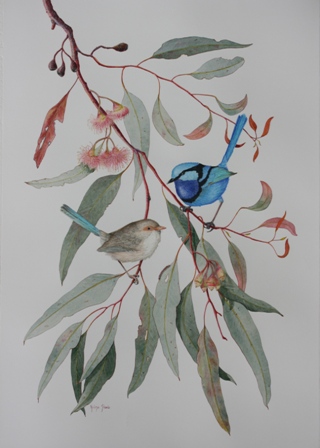
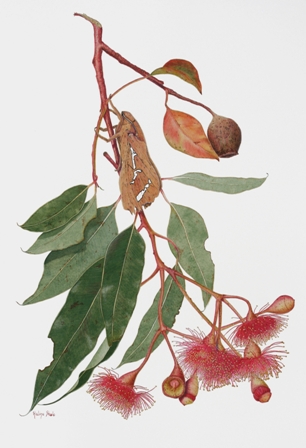
Images: Top by Sharon Field, bottom by Halina Steele
The Story
Nature is constantly in a state of change: a plant grows, flowers, forms fruit, and then dies. This is the transience of nature. In Freud's words, "the proneness to decay of all that is beautiful and perfect" (On Transience by Sigmund Freud, Translation by James Strachey).
However, nature is not perfect and there is beauty within its imperfections. Even in the dying stages of a plant, there is a certain beauty to be found in the colours, shape and form that remains. With this exhibition, Sharon Field and Halina Steele hope to demonstrate that there is inordinate beauty in all aspects of the life of a plant.
One of the oldest watercolour genres, botanical painting dates back to stone relief carvings found on Egyptian tombs at Karnak. It typically depicted plants which have medicinal value encompassing both scientific accuracy and aesthetics.
Contemporary botanical art follows centuries-old traditions combining accurate observation, detailed drawing, meticulous brushwork, and precise colour mixing. It involves the application of several layers of paint using tiny meticulous brush strokes to capture the minute detail and subtle nuances of colour that make each plant unique. An increased interest in horticulture and ecology has helped initiate a revival in this exacting art form.
Botanical art has always served two masters: science and art. The Beauty and Transience of Nature brings these elements together in a way that demonstrates that if you take the time to look, you can find beauty in any botanical subject. It does not necessarily have to be the perfect specimen. And perhaps the dying leaf is just as much a part of the story of the plant as the leaf at full maturity.
Everyone looks at the plants around them, but few people really see and appreciate the beauties that nature lays so generously before them.
Edgar Degas is believed to have said, “Art is not what you see, but what you make others see” (Australian National Gallery, 2008. Exhibition Signature Quotation). In the genre of botanical art, that quotation has real meaning. It is interesting that every day of their lives, people see trees and flowers, but so few people stop to look and to appreciate what Gaia or Mother Nature has provided so generously in such diversity and abundance. The Beauty and Transience of Nature allows people an opportunity to stop ... to look ... and to appreciate.
For a botanical artist, representing a single flower or leaf or piece of bark, whether living or dead, is a voyage of discovery. There is drama that hides in something that many people find “pretty” or “innocuous” or even overlook completely. Plants really are amazing. They have no pretence. They are themselves and do not pretend to be anything more. In this they are both elegant and demure, while at another level, their colour and form shout for attention! All of this without moving or saying a word! It is through botanical art that we can bring to the wider public the particular beauty of nature in one of her many forms.
About the artists
Sharon Field started botanical painting in 2003 and was largely a casual weekend painter until 2008 when she began to paint full time. For Sharon, the challenge is to create a 3-dimensional image on a flat sheet of paper - her particular interest being the dramatic sculptural forms and patterns that nature creates which can be living or dead, large or small, coloured or bleached. To date, Sharon has not exhibited widely, preferring to build on her technique.
Sharon specialises in graphite work and paints in watercolour on vellum (calfskin), a smooth and slippery surface that does not absorb paint in the same way that paper does. Sharon is currently undertaking a two-year Diploma with the Society of Botanical Artists (SBA) in the United Kingdom, and had one of her works shown at the SBA Exhibition in London in 2011. She has won awards for her work in Sydney and Canberra, with her works held in private collections in Australia and overseas.
Halina Steele has exhibited primarily in Canberra and Sydney since she commenced painting with watercolours in 2000. In November 2004, she exhibited with the Royal Horticultural Society in London and was awarded the Silver Grenfell Medal. Her paintings were accepted by the Hunt Institute for Botanical Documentation in Pittsburgh, Pennsylvania, USA in September 2007 and, in July of the same year, she was invited to become a member of the Florilegium Society at the Royal Botanic Gardens Sydney Inc. Her paintings are held in the permanent collections of the Botanic Gardens Trust, Sydney and the Hunt Institute.
Halina also participated in the 10th Annual Botanical Art Exhibition at the Filoli Center, (California, USA) in July 2008 and is a member of the Botanical Art Society of Australia Inc and the American Society of Botanical Artists. More recently, Halina has taken a special interest in rare and endangered flora and fauna.
WHAT’S ON
|
VISITING
|
LIVING PLANTS
|
RESEARCH
|
PLANT INFORMATION
|
EDUCATION
|
ABOUT US
|
SUPPORT
|
WHAT’S ON
VISITING
|
LIVING PLANTS
|
RESEARCH
PLANT INFORMATION
|
EDUCATION
SUPPORT
|
ABOUT US
HOME
|
![Director of National Parks [logo]](/images/dnp_90px.gif)




